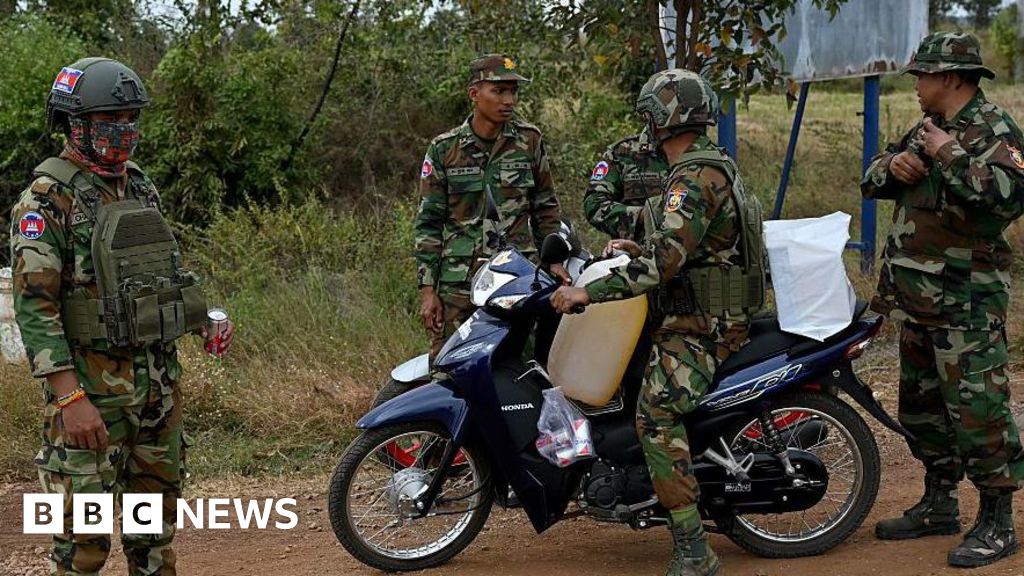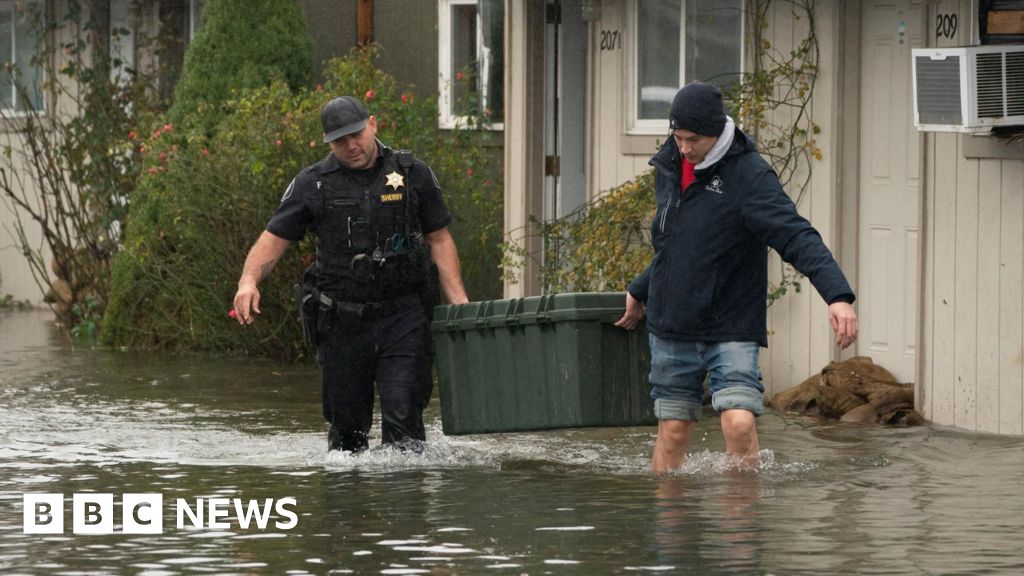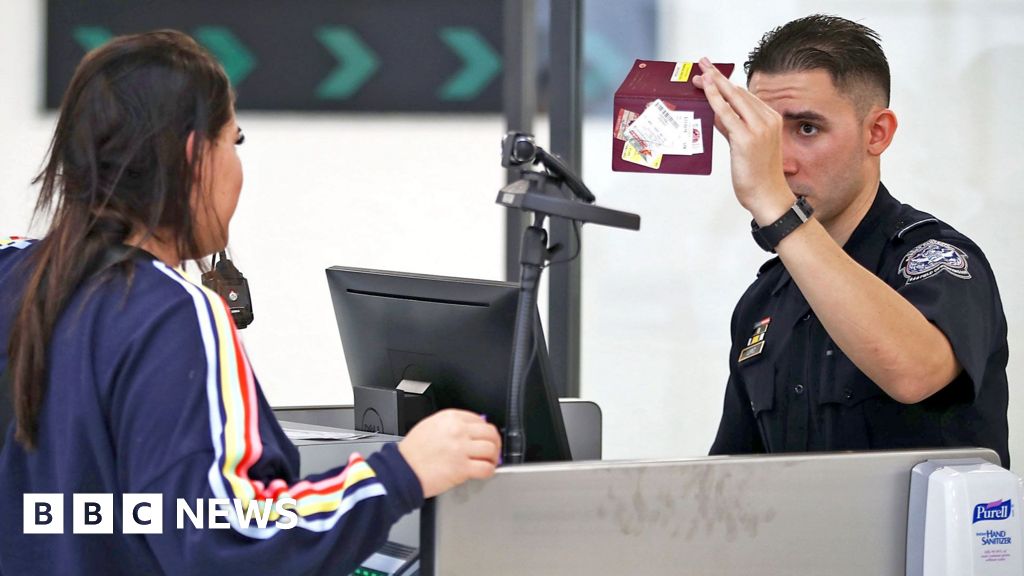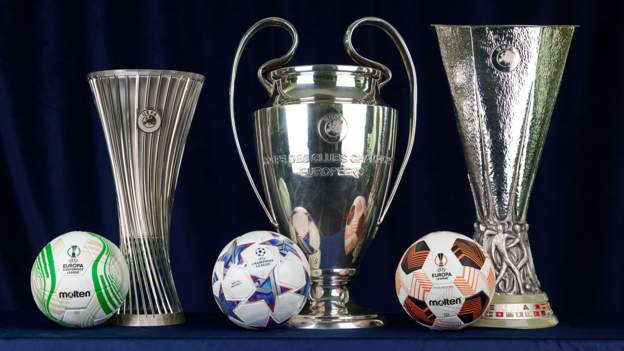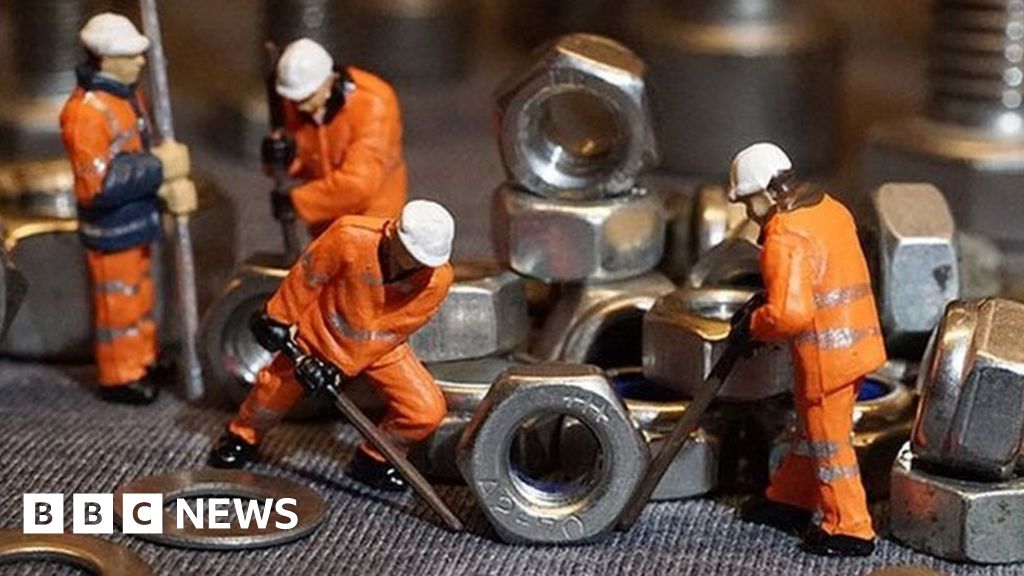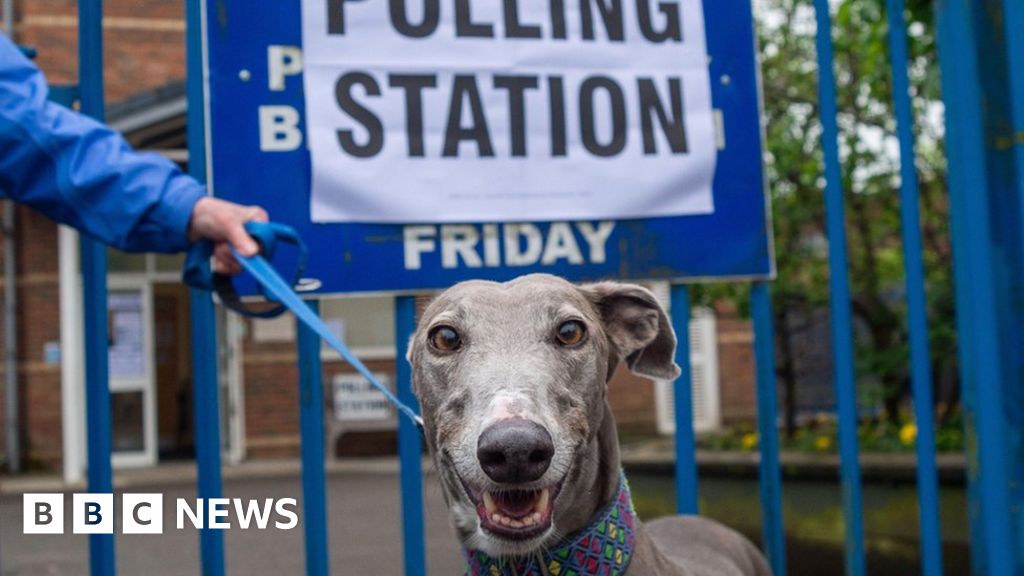More teams, more games – and more flights. Next season will see men’s European club football expand further, with an additional 177 fixtures across Uefa’s three major tournaments – and with that comes an increasing impact on the planet.
BBC Sport research suggests the inflated fixture list could lead to teams and fans flying about two billion air miles across the 2024-25 campaign, up from 1.5 billion in 2022-23.
The projected figures for next season equate to more than 4,000 journeys to the Moon and back, and would result in the release of nearly half a million tonnes of greenhouse gases which cause global heating.
But how does that tally with Uefa’s pledge to cut its climate impact? And what can be done?
Uefa’s former head of social responsibility, Patrick Gasser, has suggested the governing body stops issuing tickets to away fans for Champions League, Europa League and Europa Conference League matches to help reduce its carbon footprint.
Here, BBC Sport breaks down the numbers and looks at the issue of sustainability in European football.
What do the numbers say?
The BBC’s study looked at flights for teams and away fans, calculated using a Uefa minimum allocation of 5% of stadium capacity.
While some supporters will travel shorter journeys by rail, the study eliminated any journeys under 150 miles long. With the average journey almost 1,000 miles long, rail travel within the sample will likely be a very small percentage.
BBC Sport asked for any detail on the number of fans travelling by train but Uefa confirmed that type of analysis was not available.
The true footprint of next year’s Champions League, Europa League and Conference League seasons will likely be considerably higher than these projections once emissions from the local travel of a projected 18 million domestic fans is factored in.
That footprint will also include stadium operating emissions and the travel of Uefa officials and media, as well as the use of less sustainable forms of air travel such as business class and private charter flights, not to mention any additional fans travelling on top of the 5% or from outside of Europe. The BBC study assumed economy class travel on scheduled airlines.

European club football expansion in numbers
- Air miles between fixtures in 2022-23: 1,498,104
- Combined air miles for teams and fans in 2022-23: 1,524,586,342
- 2022-23 emissions from team and fan travel: 368,388 tonnes CO2e
- Projected air miles between fixtures for 2024-25: 1,953,062 miles
- Projected combined air miles for fan/team travel in 2024-25: 1,987,586,743 miles
- Projected 2024-25 emissions from team and fan travel: 480,417 tonnes CO2e
Methodology: BBC calculation of air miles across two seasons. We have made certain assumptions, namely that teams would be flying from the closest airport to the team’s stadium, that journeys less than 150 miles would not require a flight and that everyone was flying economy, on a scheduled airline. We used figures for number of matches and fans provided by Uefa.
(CO2e is a unit used to express the carbon footprint of all greenhouse gases together as if they were all emitted as carbon dioxide)

Next season’s European expansion comes just three years after an extra 63 matches were added with the introduction of the Conference League.
Uefa also added the biennial Nations League to its international calendar in 2018 on top of the European Championship which is held every four years. The men’s Euros in 2020 was staged across 11 different European countries.
David Wheeler, the Professional Footballers’ Association’s sustainability spokesperson, accused Uefa of a “dereliction of duty” over its climate impact.
“They are not leading on this – they are not separate to society. Everything they do has an impact on the environment,” Wycombe Wanderers midfielder Wheeler said.
“The way they are behaving suggests they think they are above that. It almost gives license to clubs, or even anyone in society, that you can do what you want.
“Instead of being a positive force for good they are exacerbating the problem and pushing us towards a very serious situation with a climate emergency.
“A lot of it [the tournament expansion] seems to be greed. Those organisations and many clubs want to make as much money as possible, regardless of the harm caused.”
Uefa also has a growth strategy for women’s football but Denmark midfielder Sofie Junge Pedersen says climate change must be a key focus given there are already “questions about the relative emissions both current and historical”.
“There are no excuses for Uefa not to be very active in the green transition and live up to their goals. There is so much money in the football industry,” Pedersen said.
“In my opinion, Uefa must spend much more of its budget on the green transition, for the sake of our planet and the people, including the ability to play football around the world.
“Players from my club and national teams whom I have told about this idea have shown huge support for this. Better to help fight climate change than to get a bit more money in your own pockets.”
A Uefa spokesperson told BBC Sport the decision to expand its European competitions followed “an extensive consultation process” in which they “listened to the ideas of fans, players, coaches, national associations, clubs, and leagues”.
“The new format will help us improve the competitive balance and generate solid revenues for clubs, leagues and grassroots football across our continent,” Uefa’s statement said.
‘Travel creates biggest carbon footprint around sport’
No other sport sees supporters travel so regularly and in such large numbers as football – and the BBC study has focused on fan travel as the biggest single contributor to emissions, with estimates suggesting it contributes 80% or more. This fact is substantially re-enforced when much of the travel is by air.
Gasser, who worked at Uefa for 22 years, suggested European football’s governing body should not require clubs to offer away fans tickets as they currently do – at a minimum 5% of capacity – or go even further and reintroduce the restrictions on travelling supporters which existed during the Covid-19 pandemic.
“It would have another benefit in terms of all the security precautions which need to be taken in host cities when teams arrive,” he said.
“We know that travel creates the biggest carbon footprint in or around football.
“I would make an exception for the finals. I think we need to look at fundamental behaviour change and that would be a good way to start.”
Gasser said the idea had been discussed “at the executive committee level” but was not approved or pursued “as far as I can see”.
He accepts the move would be unpopular with some supporters, but argues the unprecedented nature of the climate crisis demands such measures.
Uefa said it had no record of such a suggestion being made.
“I think if you’re serious about sustainability and making our sustainable contribution to fight climate change, this would be one of the measures you should implement,” Gasser said.
“Obviously, this will not delight supporters. But as a global society we need to start to make fundamental behaviour changes.
“One of the arguments against it would be you would lose a bit of atmosphere in the stadium.
“But for the sake of the climate… if we look at the past summer, all the wildfires, the different disasters, it is starting to [have an] impact.
“If the climate collapses, we are all going to suffer.”
Uefa said it would “closely monitor the evolution of competitions and implement a comprehensive assessment approach that will consider both positive and negative impacts generated through new competitions”.
What about team travel?
While fan flights contribute the largest total emissions to European football’s footprint, the environmental impact per passenger of team travel is far greater because of the use of private charter planes. These journeys have a significantly higher footprint than regular scheduled services.
BBC Sport previously reported on the domestic private charter flights taken by Premier League clubs and the details of ‘positioning flights’ – where near-empty planes are flown to convenient airports, sometimes across the UK, in order to then transport players and staff to fixtures.
We have also looked at the knockout stages of last year’s Champions League to see if private charter flights and positioning flights were being used at similar levels across greater distances in European football.
BBC Sport found that away teams chartered a flight in 26 of the 29 matches – one notable exception being the semi-finals between Inter Milan and AC Milan in the same city.
Of those 26 flights, we found evidence of 17 positioning flights. Four of those positioning flights were more than one hour long and two were over two hours long, with one plane flying two hours 48 minutes to then transport a team for just one hour 49 minutes.
How teams choose to travel is an issue for individual teams and not Uefa, but the most often cited reason for the use of private charters is fixture congestion – which is not an issue clubs have control of and will only be increased by expanding tournaments.
Uefa mandates the sale of away tickets but told BBC Sport it had “no operational control over travel of teams and ticketholders”.
“Travel data is in the hands of each of the clubs, and to our knowledge there is no tool that is looking at the aggregation and analysis of these topics,” it added.
‘This is not only a Uefa journey, it is a football journey’
Uefa is a signatory to the United Nations Sport for Climate Action Framework which requires it to halve emissions by 2030 and achieve net zero by 2040.
For next summer’s Euro 2024 in Germany, Uefa is investing 32 million euros in sustainability initiatives. This includes a 29-euro flat rate discounted ticket for the Deutsche Bahn railway system and 36-hour local transport tickets around matches.
However, the extent to which this will cut emissions or change behaviours remains to be seen. The majority of fans will not be local and 90% of emissions will mainly be from supporters travelling to Germany from other European nations. Uefa said it encouraged fans to travel to the tournament by rail or car share.
The German government has estimated the footprint of the Euros could be 500,000 tonnes CO2e but Uefa is aiming for a 20% reduction. However, that reduction is just for the finals tournament – meaning it does not include qualifying matches which were held across the continent.
The growth of club matches also means the annual men’s football competitions are now far more polluting than the Euro finals.
Director of sustainability Michele Uva says Uefa has to balance a lot of issues.
“Environmental sustainability is only one chapter of the four sustainability topics we are taking into consideration. We also have social sustainability, sporting sustainability and economic sustainability,” he said.
When asked if that meant economic sustainability – money and profit – was being put ahead of the environment, Uva responded: “96% of the money is redistributed to the clubs. We are providing all the clubs with a Uefa carbon footprint calculator to start to understand what their carbon footprint is and pushing them to reduce their emissions in such a way.
“It is now mandatory for the clubs to have a sustainability strategy and a sustainability manager. This is not only a Uefa journey, it is a football journey.”
There is no doubt, however, that the addition of extra games makes it harder for clubs to be sustainable. The format changes themselves are, in part, a response to the threat of the breakaway European Super League in 2021.
Uva said Uefa’s net-zero strategy did not apply to the travel of fans: “The net-zero commitment is on Uefa activity. The competitions are a club activity.”
Critics say this message seems to go against much of what we know about Uefa competitions – the presentation, rules, advertising, match day and stadium operations, as well as the sale of TV rights.
Ultimately, the planet does not care whether the emissions of European football belong to Uefa or to the individual clubs. What is certain is that football is contributing more and more to climate change at a time when the rest of society is looking for solutions.
And as football will continue to be affected by climate change and extreme weather, the majority of those impacts will be felt by football’s smaller teams, lower leagues, and the grassroots players.

